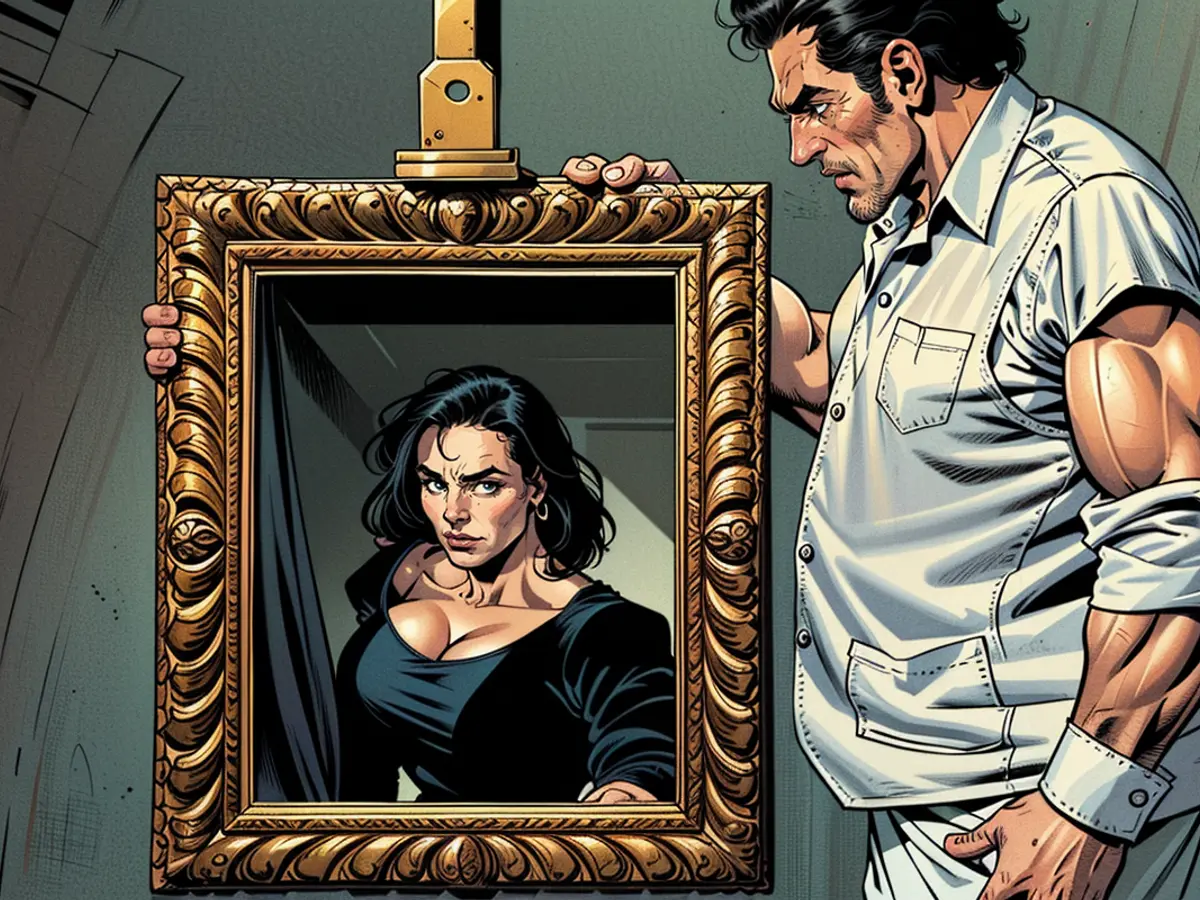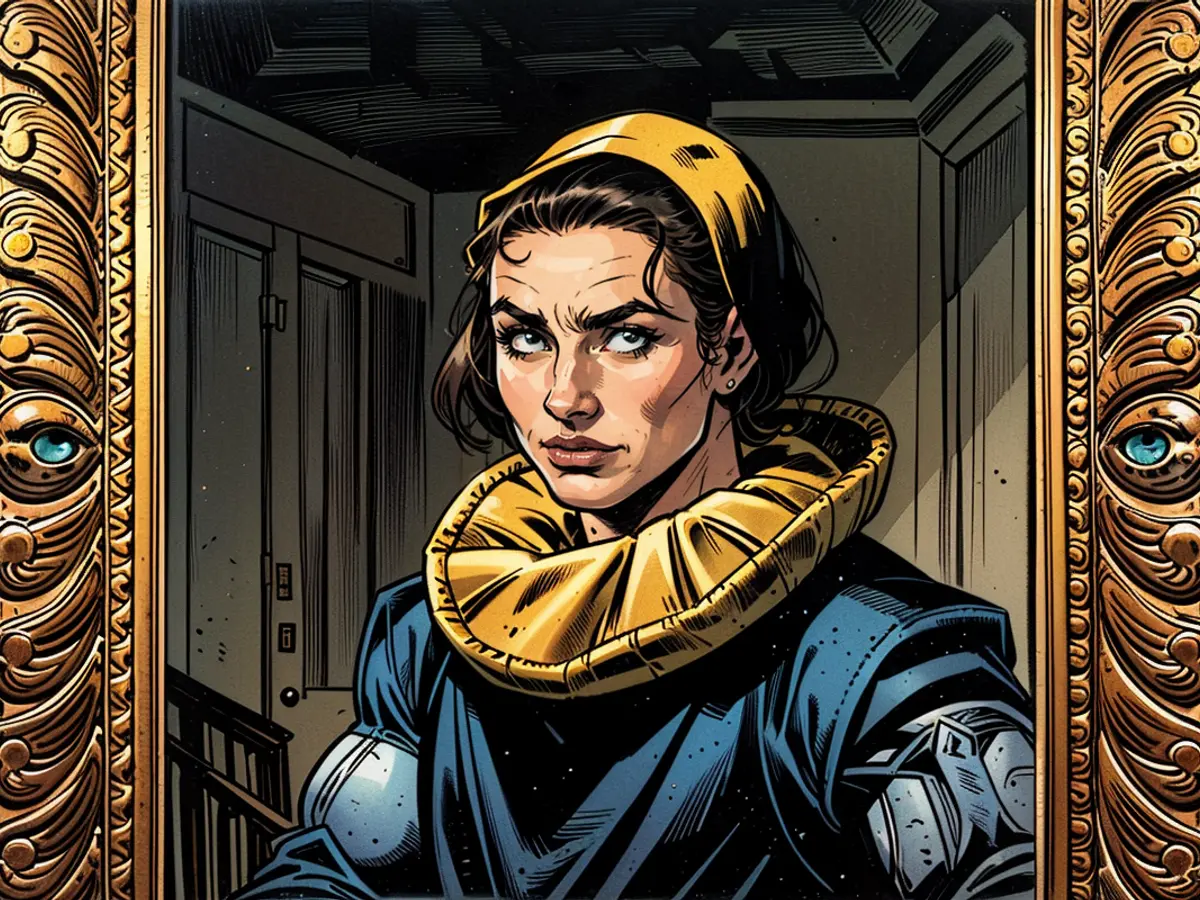An unexpectedly high-priced painting, discovered in an attic in Maine, fetched $1.4 million. Could this secret treasure be a misplaced masterpiece from Rembrandt?
"During home inspections, we sometimes enter blind, not knowing what we'll uncover," stated Veilleux, the founder of Thomaston Place Auction Galleries, in a press statement. "The house was filled with stunning pieces, but it was in the attic, surrounded by art, that we stumbled upon this exceptional portrait."
The painting seemed to have been executed in the style of the Dutch master Rembrandt — and a label on the frame's reverse suggested it was by him himself. The document, appearing to be issued by the Philadelphia Museum of Art, also hinted that the painting was lent to the museum in 1970.
However, little is known about the portrait, and it is not widely recognized by scholars as belonging to Rembrandt's oeuvre. While the auction house claimed the label to be genuine, the Philadelphia Museum of Art did not confirm having borrowed the portrait. (A museum representative added, via email, that "generally, a slip or label does not automatically verify a work of art — more proof would be necessary.")
Thomaston Place refused to reveal if they consulted a Rembrandt expert about the attribution, but they decided to list the painting with an estimate of only $10,000 to $15,000. The portrait was described in sale materials as "Inspired by Rembrandt," indicating that a painting is believed to be a copy or imitation of a known artist's style, and is not an original work.
Yet, not everyone was convinced.
After an opening bid of $32,500, more than doubling the high estimate, bidding at this weekend's auction quickly surged into the seven figures. Over a dozen potential buyers, some joining via phone from Europe, participated in the sale, according to Thomaston Place. Three phone bidders remained until $900,000, before the last two raised the final sale price to $1.41 million.
The auction house believes this to be the highest sum paid for an artwork at a Maine auction ever. And the price suggests that numerous collectors (including the successful bidder, identified only as a "private European collector") believe there's enough chance that it is an actual Rembrandt to justify the risk.
Missing from the records

Rembrandt specialist Gary Schwartz reported that a prospective buyer had previously sought his professional opinion about the Maine portrait. Advising the unnamed collector (who was not the winning bidder), he suggested they go ahead and purchase it. The art historian told CNN he believes there's an "extremely high" probability that the painting was created by the Dutch master.
While Schwartz emphasized it is difficult to make a definitive judgment without seeing the painting in person, he pointed to a strikingly equivalent Rembrandt portrait, illustrating a young woman in a white cap, at the Academy of Fine Arts Vienna.
“The resemblance ... is so striking that I am baffled as to why people accept one and dismiss the other,” he said from his home in the Netherlands, adding that he is "not surprised that someone paid (over) a million dollars at auction."
Schwartz also noted that the Maine artwork had been included in a catalog of Rembrandt's work as recently as 1969. Listed under the title “Portrait of a young girl,” the painting is described as belonging to a private collector in Philadelphia, Pennsylvania.
Although the catalog's author noted that the attribution to Rembrandt was "doubtful," Schwartz believes its inclusion is significant — and that the painting was simply overlooked, as it was in private hands and inaccessible to scholars.
“When paintings fall out of favor, they simply vanish into obscurity,” said Schwartz, who published a 2022 book arguing that another discounted painting, “Rembrandt in a Red Beret,” is actually a genuine self-portrait.
Art historian Volker Manuth, who authored publisher Taschen's 2019 monograph “Rembrandt: The Complete Paintings,” told CNN he was also approached by a potential buyer of the Maine portrait. He had only encountered it as a “poor black-and-white reproduction” in the aforementioned 1969 catalog, adding via email that he has “more doubts about the attribution to Rembrandt than not” (though he, too, stressed that attributions “should not be granted without a thorough investigation of the original painting”).

“The price paid... might indicate that someone has hopes that the cleaning of the rather dirty painting might transform it into a portrait with the characteristics assigned to Rembrandt,” concluded Manuth, who is an art history professor at Radboud University in the Netherlands. “This occurs more and more frequently. I would not be surprised to see the painting appear back on the market soon as ‘Rembrandt.'”
A matter of opinion
There is no single entity with the authority to settle questions of attribution, and the influential Rembrandt Research Project disbanded in 2014 (according to Schwartz's view, without ever considering the Maine portrait). Over the past century, the number of paintings broadly accepted by scholars as genuine Rembrandts has drastically decreased, with hundreds being reattributed to followers or downgraded to “after Rembrandt” status.
However, inclusion in a major catalog, or the support of a large auction house, can significantly increase a painting's value. For example, "The Adoration of the Kings," which was valued at just $17,000 by Christie's in 2021, sold for almost $13.8 million last year after new research led Sotheby's to conclude it was an authentic Rembrandt, not a work by an artist associated with him.
Schwartz suggested that if the Maine portrait receives a similar level of recognition, its value could escalate to as much as $5 million. During a conversation with the New York Times, mark expert Winter projected a value "around the $15 million mark."
At some point, the painting could potentially be worth far more than its initial selling price at Thomaston Place, but only if the new owner allows scholars to examine it closely.
"The ideal scenario would be to take this painting to Vienna, display it alongside a similar portrait, and engage in a dialogue with a few analysts," Schwartz suggested, further adding. "Since it's painted on a panel, you can determine the age of the panel, and often, you'll discover that the same wood was used in other paintings from Rembrandt's workshop."

"No one should make a final judgment without conducting a thorough investigation of the item," Schwartz cautioned.
The painting's style closely resembles the work of Dutch master Rembrandt, showcasing the artist's distinctive brush technique and use of light and shadow. The attic, filled with various art pieces, was a treasure trove of artistic styles, but the exceptional portrait stood out due to its striking resemblance to Rembrandt's masterpieces.









